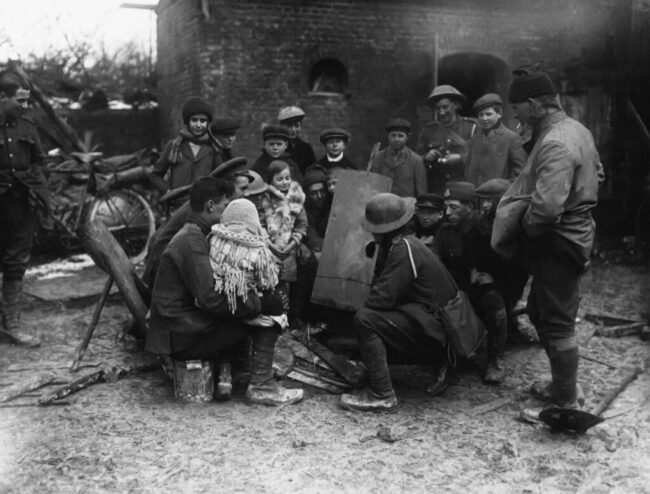The realm of scurvy, a condition that was once a dreaded scourge of the high seas. But there’s more to scurvy than a simple deficiency in vitamin C. In this exploration, we’ll delve deep into the symptoms, the science, and the shocking consequences of this age-old ailment. So, let’s navigate the fascinating tapestry of scurvy and discover the hidden truths behind it.
Unveiling the Symptoms
The Surprising Array of Symptoms
Scurvy is not your typical dietary deficiency. While most of us may associate it with vitamin C deficiency, the symptoms extend far beyond what meets the eye. So, let’s elevate our understanding and explore the lesser-known manifestations of this condition.
The first sign of scurvy often goes unnoticed, as it mirrors the fatigue we all experience from time to time. However, in the case of scurvy, this exhaustion goes beyond what’s considered normal, leaving individuals feeling perpetually drained.
Scurvy plays tricks on your appetite, causing it to dwindle into near non-existence. The simple joy of a satisfying meal becomes a distant memory as food loses its allure.
Irritability and agitation become constant companions for those afflicted by scurvy. The slightest annoyance can trigger frustration, making daily life a daunting task.
Losing weight might seem like a dream come true for some, but in scurvy, it’s a sign of trouble. The condition leads to an inability to put on weight, indicating a deeper issue within the body.
A truly bizarre symptom of scurvy is pseudoparalysis. Muscles malfunction, causing difficulties in movement that mimic paralysis, though it’s far from being a neurological disorder.
Scurvy brings forth muscle and joint aches, making every movement a painful ordeal. This symptom can escalate into a debilitating experience.
A peculiar skin manifestation of scurvy is rashes that initially appear as small red blisters and eventually transform into massive purple blotches. These skin issues, often concentrated on the legs, are a telltale sign of the condition.
One of the most recognizable symptoms of scurvy is bleeding gums. They take on a spongy texture and shift to a disconcerting blueish-purple hue.
Scurvy doesn’t spare the eyes. Affected individuals may experience swollen and bulging eyeballs, adding to the discomfort and distress.
While rare, a peculiar symptom of scurvy is corkscrew hair. This bizarre manifestation is typically seen in non-infantile cases and predominantly occurs on the arms and legs.
Scurvy’s Devastating Effects
Now that we’ve uncovered the surprising array of symptoms, let’s dive deeper into the science behind scurvy and understand why this seemingly simple deficiency can have such profound and devastating effects on the human body.
Vitamin C, scientifically known as ascorbic acid, plays a multifaceted role in our bodies. Beyond its reputation as an immune booster, it serves as a linchpin in several vital processes.
Vitamin C is a metabolic powerhouse, essential for processing lipids (fats) and fat-soluble vitamins, including A, D, E, and K. This fundamental role links vitamin C deficiency to a cascade of health issues.
Our brain’s neurotransmitters, the messengers of our nervous system, rely on vitamin C for their biosynthesis. Without it, the delicate balance of these chemicals is disrupted, affecting mood and cognitive function.
Collagen, often referred to as the body’s glue, is where vitamin C plays a pivotal role. This structural protein is found throughout our body and is crucial for maintaining strength and integrity.
Collagen is the building block of connective tissues, from muscles to skin, bones, and blood vessels. Without adequate vitamin C, collagen production falters, leading to a breakdown in these vital structures.
Prolyl hydroxylase and lysyl hydroxylase, two crucial enzymes, require vitamin C as a cofactor for their proper function. These enzymes are responsible for modifying amino acids in collagen, ensuring its stability.
Interestingly, iron (Fe2+) plays a role in collagen production, but it needs to remain in its unstable form. Vitamin C acts as a water-soluble antioxidant, preventing iron from stabilizing into its less useful form (Fe3+), thus maintaining the necessary Fe2+ state.
Collagen’s significance extends across the body, from muscles to skin, bones, blood vessels, and even weight management. Without it, bones become brittle, skin loses elasticity, and blood vessels weaken.
As we’ve seen, vitamin C deficiency disrupts collagen production, leading to a myriad of issues. But what are the real-life consequences of this collagen collapse?
Symptoms Galore
The symptoms of scurvy, as we’ve explored, are just the tip of the iceberg. As collagen dwindles, it impacts every facet of your health, leading to severe consequences, including heart failure.
Collagen’s presence in muscles is crucial for their function. Without it, muscles weaken, including the heart muscles. This can ultimately lead to cardiac failure, a life-threatening condition.
Collagen is not only essential for your body’s structure but also for the things you might not expect, like the wobbly delight of jello jigglers. Without collagen, even this simple pleasure becomes unattainable.
The impact of vitamin C deficiency goes beyond the physical. Disrupted neurotransmitter synthesis can affect mood, cognitive function, and overall mental well-being.
The Vulnerable
While scurvy typically takes weeks or even months to manifest in adults, infants and young children are more vulnerable. Their rapid growth demands a consistent supply of vitamin C, making them susceptible to deficiency.
Further Insights into Scurvy
Before we conclude our journey into the world of scurvy, here are some bonus factoids that shed additional light on this fascinating ailment.
Scurvy’s historical significance is intertwined with the maritime world. Sailors on long voyages often suffered from scurvy due to the lack of fresh fruits and vegetables. This led to the exploration of remedies and eventually the discovery of vitamin C.
Scottish naval surgeon James Lind is credited with conducting one of the earliest clinical trials in 1747. He discovered that citrus fruits, rich in vitamin C, effectively prevented and treated scurvy among sailors.
Scurvy had a profound impact on exploration. It affected expeditions like those of Vasco da Gama and Captain Cook, leading to illness, death, and the need for better understanding of nutrition.
While scurvy is rare in developed countries today, isolated cases still occur, often in individuals with limited access to fresh fruits and vegetables or specific dietary restrictions.
Scurvy remains a concern in some regions of the world, where malnutrition and limited access to nutritious foods persist. Efforts continue to combat this preventable condition.
Our journey into the depths of scurvy has revealed a condition far more complex and intriguing than we might have initially thought. Beyond its well-known symptoms lies a web of interconnected biological processes, where vitamin C acts as the thread that holds our health together. From the peculiar symptoms to the science behind collagen production, scurvy’s story is one of both historical significance and modern relevance. As we navigate the tapestry of scurvy, we gain a deeper appreciation for the importance of a balanced diet and the role of vitamin C in maintaining our well-being. So, let’s continue to explore the fascinating landscapes of health and nutrition, ensuring that the tales of scurvy remain confined to the annals of history.



